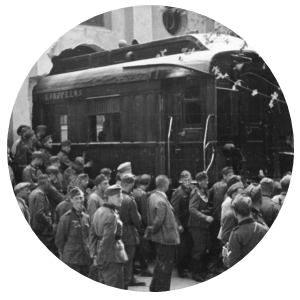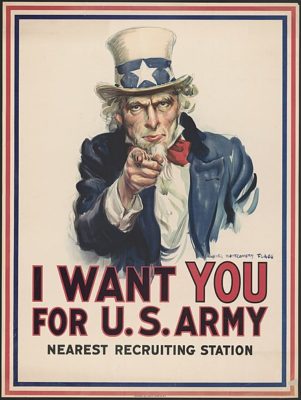The Compiègne wagon: signing a treaty to end all wars
 To mark the German surrender in World War One, an Armistice was signed on 11 November, 1918.
To mark the German surrender in World War One, an Armistice was signed on 11 November, 1918.
This took place in a converted wagon-lits, or railway sleeping car, in the forest of Compiègne, north of Paris. The Compiègne wagon, as it became known, was a railway dining coach run by Compagnie Internationale des Wagons-Lits, a travel company which also ran the Orient Express.
Finally over: the war to end all wars?
After several years of bloody fighting, mainly in the trenches of the Western Front, the belligerents had reached a weary stalemate. But when the United States entered the war in April 1917, Uncle Sam’s dollar and his immense financial and industrial resources tipped the balance. This gave the Anglo-French Allies the impetus to force the Germans to the negotiating table.
With the signing of the Traité de Versailles that followed, the war that was fought to end all wars—the Great War—was over at last.
A second treaty on the Compiègne wagon
But even on the Allied side, there were critics of what were seen by some as impossible terms imposed on Germany. British economist John Maynard Keynes predicted that the stiff war reparations and harsh conditions imposed by the treaty would lead to the collapse of the German economy. This, he wrote, would lead to serious financial and political repercussions in Europe in the years ahead.
He was right. Only two decades later, Hitler’s blitzkrieg crashed into France.
The Anglo-French defence collapsed like a house of cards, and on 22 June 1940, another Armistice was signed.
This took place in the same Compiègne carriage that was used in 1918. And it was positioned in exactly the same place in the same forest. The surrender and humiliation of France was complete, and the Fuhrer danced a jig in anticipation of victory in World War Two.
War is over, thanks to the US?
However, in November 1941 Uncle Sam and his dollar once again came to the rescue. Albeit, some still think, a little late. But once again this changed the odds in favour of the Allies.
Most contemporary historians now agree that although the US greenback was of vital importance once again. This time, there was another factor that turned the tide against the Germans.
So, what was this other component that helped the Allies to win the war? The short answer is that it was an ingredient provided by the Soviet Union—and something they had an abundant supply of.
Something seemingly unlimited
Many battles would be fought in the West before Europe was liberated:
- the Battle of Britain,
- the Battle of the Atlantic,
- El Alamein,
- and the liberation of Italy and D-Day, to name just a few.
These slowly turned the tide against the Axis Powers.
But, without diminishing the bravery of the millions of soldiers who fought in the numerous and momentous battles in World War Two’s European Theatre, most scholars agree that none of these had as much impact on the final outcome as did those that were fought in the East.
This was where the Russians had a unique, powerful and formidable advantage.
“Stalin suffered no bourgeois squeamishness about casualties, nor about collateral damage to civilians,” writes historian Max Hastings.
He and his generals had “a willingness to accept almost unlimited casualties… there were always more men.” And even in the years of victory, “the Red Army accepted losses of around 25 per cent in each action, a casualty rate the Anglo-American forces would never have accepted…”[1]
So, although American financial muscle played a pivotal role in the outcome of World War Two, the other fundamental ingredient was undoubtedly Russian blood.
Have you heard about the Compiègne wagon? Were you aware of the influence wars in the East had on Europe? We’d love to hear your thoughts and reflections in the comments section below.
[1] Max Hastings, All Hell Let Loose. Harper Press, 2011.Max Hastings, The Secret War, William Collins, 2015 Image credits
1. 1940 France Compiègne, by ww2gallery via Flickr
2. Memorial Wagon déportation Compiègne, by Captainm via Wikipedia
3. Uncle Sam, via Wikipedia
4. Red Army soldiers, by RakaAditya via Wikipedia










We can discuss the entry of the United States in WW II and the seeming endless supply of soldiers that Stalin provided, but it’s important to note that the U.S. signed, but did not ratify, the Treaty of Versailles. Neither the U.S. nor Britain were prepared to hold Germany to the terms of the Treaty. France knew that her eastern neighbor was violating the treaty but was not supported by her allies in reacting in a definitive way. It distresses me when people say that the French did not have the will to resist the German invasion in WW II. France looked behind her in the 1930’s and support was not to be found — until Poland was invaded. And so, WW II followed WW I — inevitably.
Thanks Michael, for reading my article and for the points you make.
And I agree with you about the common Anglo Saxon prejudice that France “gave up to quickly” or “took the soft option”. Historians have pointed to how complicated the pre WW2 period was in France—not to mention that the Occupation was long, dark and very dangerous.
I have tried to cast some light on the collapse of the French army in other articles on MFL.
Thanks again.
Ray